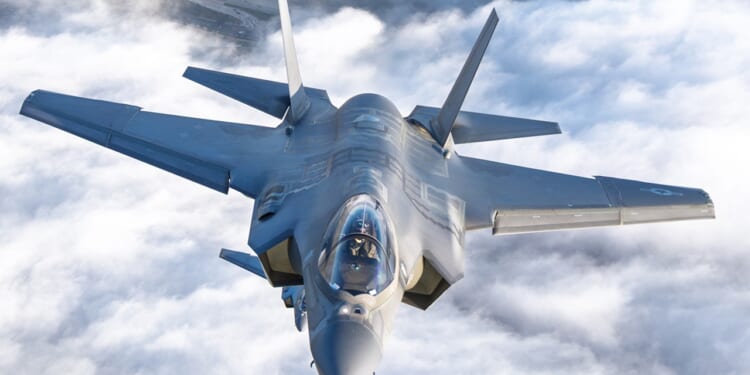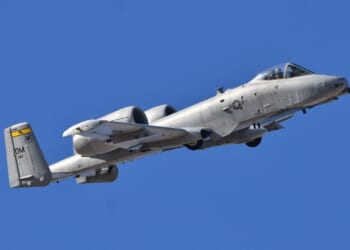Each pilot’s HMDS helmet is custom-fitted, with millimeter precision, to ensure that the imagery aligns with the pilot’s pupils.
The Lockheed Martin F-35 Lightning II’s most cutting-edge feature is not what one might expect. It’s not the stealth shaping, or the afterburning turbofan engine. Nor is it the plane’s software. Instead, it is the pilot’s helmet—the F-35 Helmet Mounted Display System (HMDS), which is not even really a helmet in the conventional sense. “Helmets” are what football and hockey players wear to protect their heads from bumping. The HMDS is a fusion device, functionally capable of putting the pilot’s head directly inside of the aircraft’s cockpit—making the traditional cockpit instrument panel almost redundant.
Perhaps the detail that makes the HMDS’s significance most clear is the price tag. Each helmet costs $400,000—but the pilots get what they pay for!
The HMDS elevates the pilot into a node in a sensor web, capable of accessing the F-35’s array of cameras, radars, and infrared trackers. As has been noted elsewhere, aircraft pilots are traditionally presented with a dizzying array of information about their aircraft, and are tasked with quickly synthesizing it and making sense of it. There is no easy way to do this, although extensive training and practice help during moments of crisis.
The HMDS helmet reimagines the traditional aircraft cockpit display, largely making it redundant. The helmet takes all of the data from all of the sensors and integrates it, then projects that integrated data onto the helmet visor in real time. The result is the most situationally aware pilot to ever fly. Remarkably, the situational awareness covers 360-degrees, giving the pilot a full-range picture of the battlespace around them. Six Distributed Aperture System (DAS) sensors, stitched into the skin of the aircraft, allow for the 360-degree coverage. Cameras also allow the HMDS-wearing pilot to “look” through the floor of the cockpit, through the aircraft’s fuselage, and see the sky and ground below. That ability, to fly with a view unobstructed by the aircraft itself, is a unique feature in aviation history. It amounts to an illusion in which the aircraft—as well as any blind spots it creates—is basically erased, and it changes the relationship between the pilot and the aircraft.
For generations, and still today in most platforms, the pilot flew while constantly scanning instruments and dials and outside of the aircraft, translating the torrent of information into an abstract picture of the flight envelope and the aircraft’s surroundings. The HMDS basically collapses that instrument scanning and synthesis, giving the pilot a comprehensive picture of altitude, air speed, radar tracks, and friend-foe distinctions. Within the helmet, targets are glowing shapes in the night sky, positioned exactly where the target exists in real space, annotated with identity and range. The pilots themselves are integrated with the battle space.
The HMDS Helmet Is an Incredible Engineering Feat
The HMDS is a feat of engineering. Developed by Collins Elbit Vision Systems, a joint venture between Collins Aerospace and Elbit Systems of America, each helmet is custom-fitted, with millimeter precision, to ensure that the imagery aligns with the pilot’s pupils. Even slight misalignment can inside nausea, blur, or fatal target errors—so the measurements must be exactingly precise.
The HMDS represents a step, however incremental, in the ongoing shift from manned fighters to unmanned fighters. The HMDS makes the F-35 pilot less a tactile fighter pilot, reliant on stick and rudder for control inputs, to outmaneuver the enemy, and more of a human sensor node, integrated with the machine, reliant on software and data streams. Really, the HMDS makes the F-35 pilot slightly less human, a progression that will likely accelerate in the decades to come, until the human is phased out of the cockpit entirely.
About the Author: Harrison Kass
Harrison Kass is a senior defense and national security writer at The National Interest. Kass is an attorney and former political candidate who joined the US Air Force as a pilot trainee before being medically discharged. He focuses on military strategy, aerospace, and global security affairs. He holds a JD from the University of Oregon and a master’s in Global Journalism and International Relations from NYU.
Image: Shutterstock / ranchorunner.

















